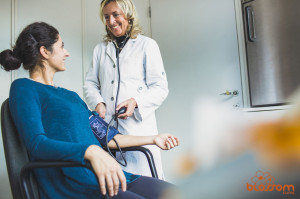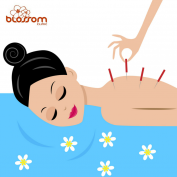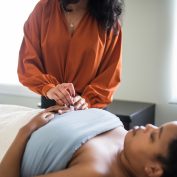 Blood tests can be used to assess how many eggs are left in the ovary (also called ovarian reserve). The tests include Day 3 Follicle Stimulating Hormone (FSH), a clomiphene challenge test (CCT), and Anti-Müllerian Hormone (AMH). These are strong predictors of how well your body will respond to fertility drugs. The results of these blood tests, along with the resting follicle count (also called the antral follicle count), are the most conclusive tests of ovarian reserve.
Blood tests can be used to assess how many eggs are left in the ovary (also called ovarian reserve). The tests include Day 3 Follicle Stimulating Hormone (FSH), a clomiphene challenge test (CCT), and Anti-Müllerian Hormone (AMH). These are strong predictors of how well your body will respond to fertility drugs. The results of these blood tests, along with the resting follicle count (also called the antral follicle count), are the most conclusive tests of ovarian reserve.
Follicle Stimulating Hormone (FSH)
A measure of the Follicle Stimulating Hormone (FSH) level shows how hard your body has to work to stimulate a follicle to grow each month. A high FSH level on Day 3 shows that the pituitary gland in the brain is trying to stimulate an ovary that has a diminished capacity to respond. This is a poor prognostic sign.
Although FSH levels can correlate to both the quantity and quality of eggs, it should be taken as part of the bigger picture and used in conjunction with other diagnostic factors. The age of the woman is the most overwhelming predictor of success from fertility treatments. A young women with a high FSH still has a better chance of becoming pregnant than an older woman with normal FSH has. The older woman could have many eggs, but they are more likely to be abnormal because of her age. In the end, quality is what really counts.
FSH levels can predict the chance of the cycle’s being canceled because of a low response or low egg yield, but age is a better predictor for pregnancy. Ovarian reserves, together with the female partner’s age, are the best predictors of a treatment’s success.
Clomiphene Challenge Test (CCT)
For the clomiphene challenge test (CCT), blood is drawn on Day 3, Day 4, or Day 5 of the menstrual cycle, and the levels of estrogen and FSH are measured. The woman then takes clomiphene citrate tablets (brand name, Clomid) between Days 5 and 9 of the cycle. Blood is drawn around Day 10 of the cycle, and the FSH level is measured once again. The highest level of FSH, whether the Day 3 or the Day 10 level, is used as the test result.
The FSH level following Clomid indicates how well the woman will respond to fertility drugs and her likelihood of conception, depending on age. In general, an FSH level above 10 indicates a lower-than-average success rate. At a level between 12 and 14, the chances of pregnancy are further reduced. And with an FSH above 15, the patient may be advised to consider alternative treatments.
There are many cases of women with elevated FSH levels becoming pregnant and having healthy babies. If you are found to have an elevated level, don’t be too disheartened. Work with your RE to find the best treatment suited to you. Most doctors will try at least one IVF cycle with your own eggs. You may just need a higher-than-average dose of stimulation drugs, depending on your response to Clomid. Another option is to do a mini-IVF cycle with Clomid or letrozole (brand name, Femara). Experience has shown that women expected to get only two or three eggs with high doses of injectable fertility drugs can do just as well with Clomid or Femara tablets at a much reduced cost.
Anti-Müllerian Hormone Test (AMH)
Anti-Müllerian hormone (AMH) is a protein made by cells in small ovarian follicles. Production is highest in the early stages of follicular development, when the follicles are smaller than 4 millimeters in diameter and stops when the follicle gets bigger. There is almost no AMH made in follicles over 8 millimeters. Because only small follicles produce AMH, the circulating blood level can be used as a fairly accurate indicator of how many tiny microscopic follicles are left in the ovary. This is the ovarian reserve.
With increasing age, the ovarian reserve and the amount of AMH produced decline. On the other hand, women with many small follicles (such as those with polycystic ovaries) or a good supply of primary follicles, have a high level of AMH.
Remember, AMH level is not an indicator of egg quality. We do know, however, that the more eggs we collect, the greater chance we have to create good quality embryos for transfer. AMH levels may give us an indirect prediction of a woman’s chance to conceive.
One advantage AMH testing has over FSH testing is that the levels are quite constant, and testing can be done on any day of the cycle. No test is perfect, so the results from both the FSH and AMH testing are used in conjunction with other factors when predicting success rates for fertility treatments.
Measuring AMH Levels |
||
|
|
AMH Level ng/mL |
AMH Level pmol/L |
High |
Above 6.8 |
Above 67 |
Normal |
4–6.8 |
40–67 |
Low normal |
2.2–4 |
22–40 |
Low |
0.3–2.2 |
3–22 |
Very low |
Less than 0.3 |
Less than 3 |
Summary of Ovarian Reserve Testing:
- Egg quality and quantity decline significantly as women age. Both quality and quantity can be average for her age, better than average, or poorer than average in an individual.
- Tests for FSH/AMH indicate ovarian reserve, not the quality of the eggs.
- Younger women are more likely to have a higher percentage of normal eggs, even with low ovarian reserve.
- Older women are more likely to have a higher percentage of abnormal eggs, even with normal ovarian reserve.
- The egg recruited by the ovary each month is random; good-quality eggs are not more likely to grow than poor-quality eggs are.
- The eggs retrieved for IVF are random; good-quality eggs are not more likely to develop than poor-quality eggs.
Rebecca Matthews has worked as a full-time embryologist at Oregon Reproductive Medicine for over 15 years. She moved to the USA after receiving her PhD in cell biology studying embryo implantation at the University of Manchester in England. The results of her efforts have contributed to the healthy births of thousands of babies to warm and loving families from all over the world. She is passionate about health care, her family, and helping others fulfill their dream of a complete family. She has also authored a book called IVF: A Patient’s Guide.












